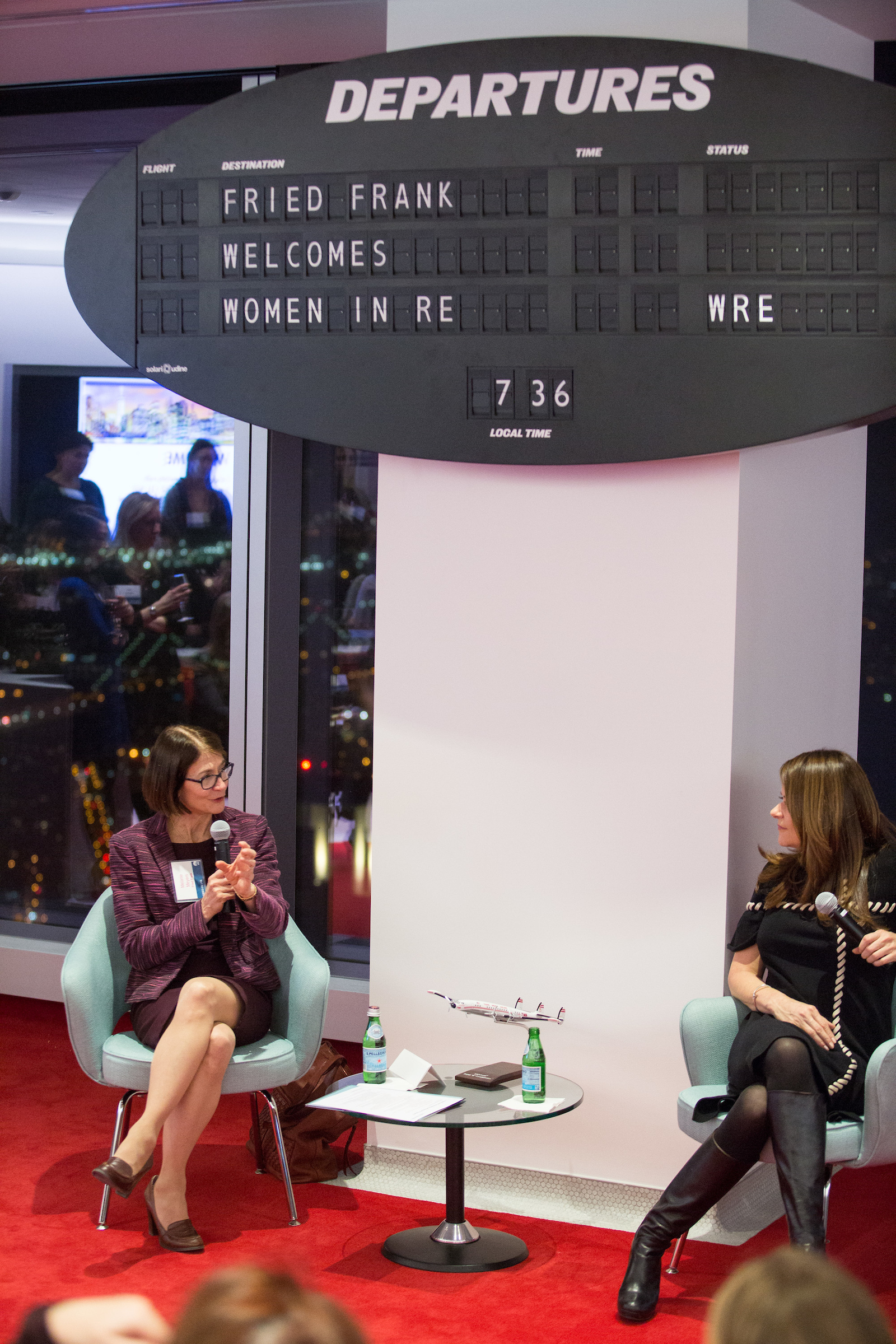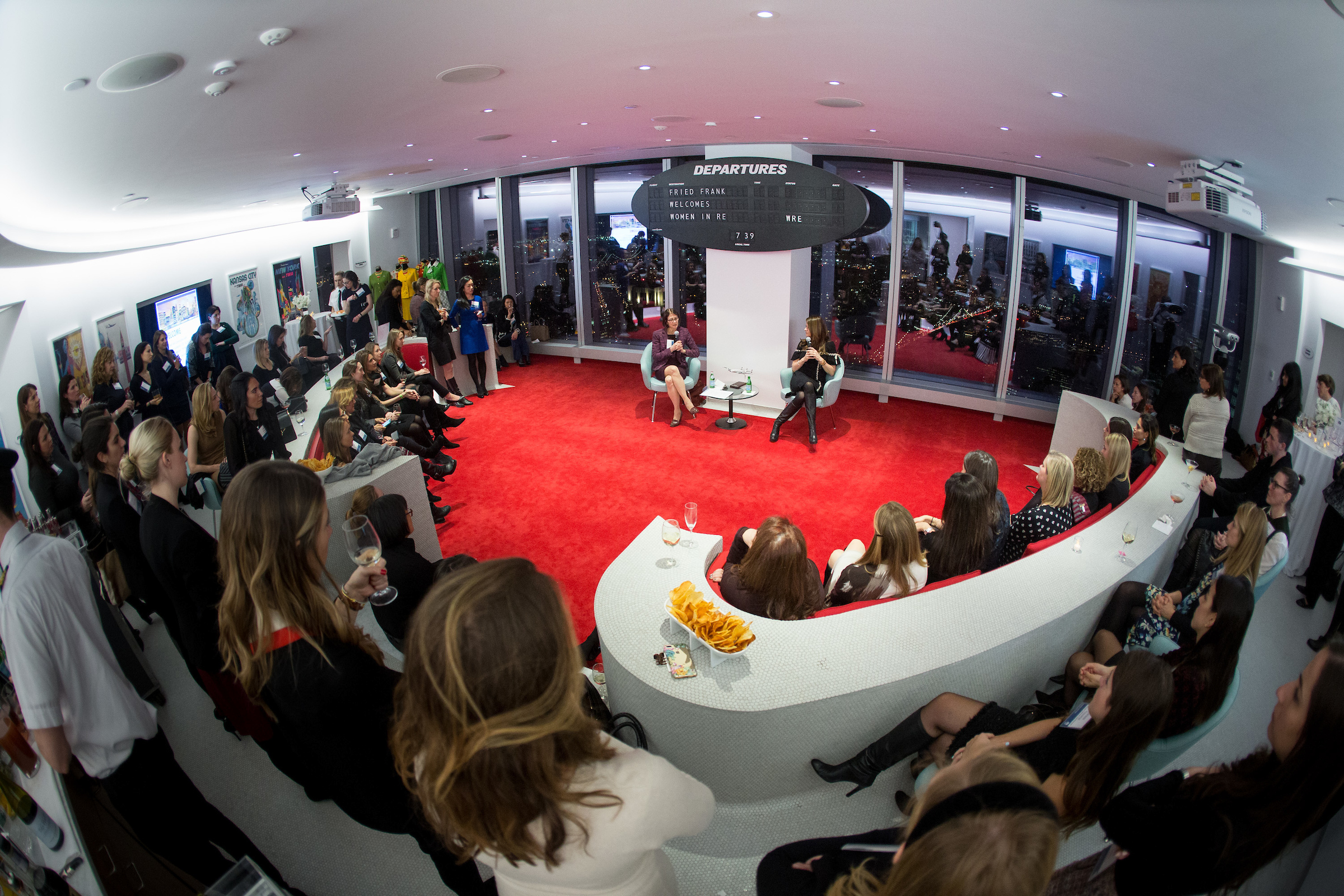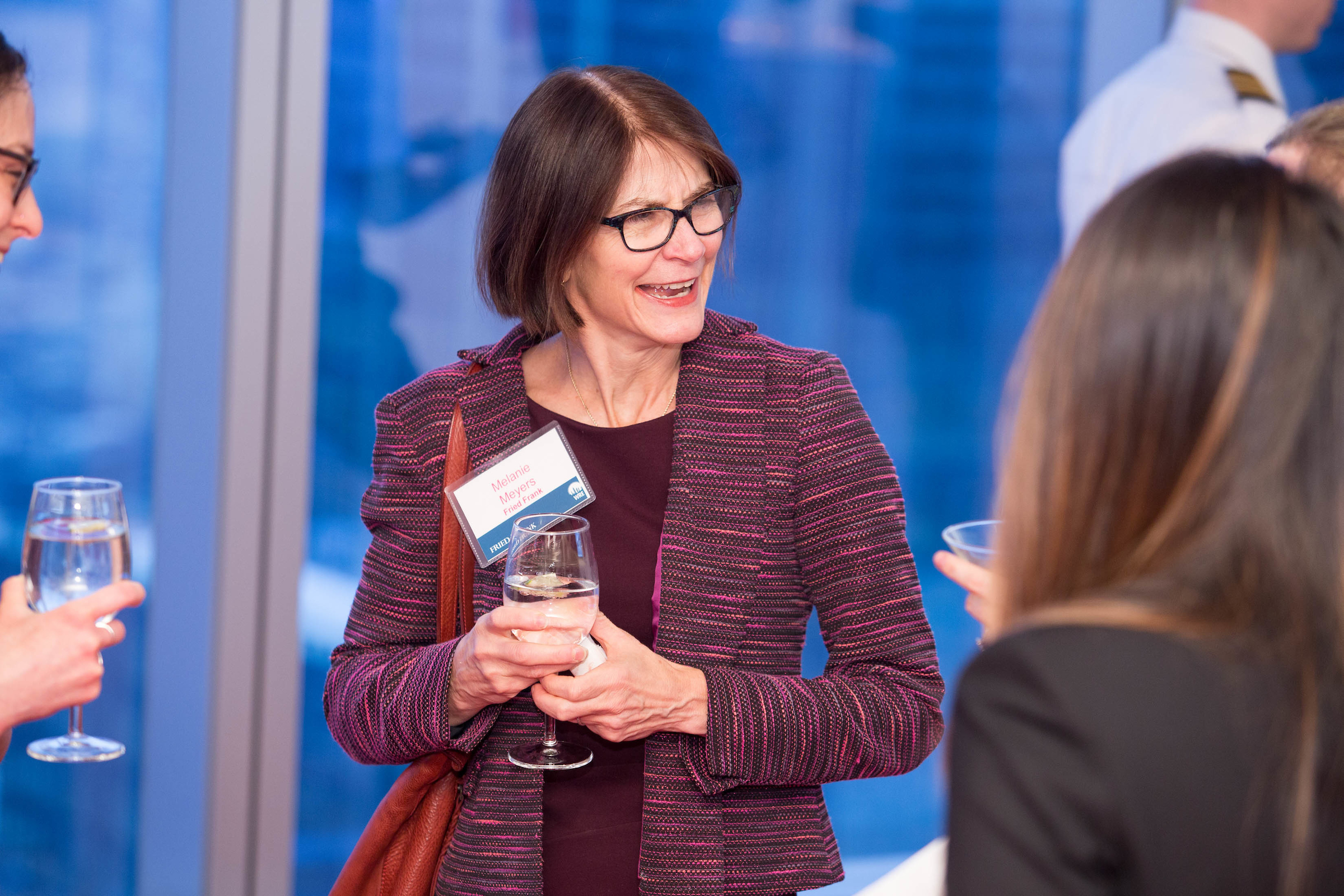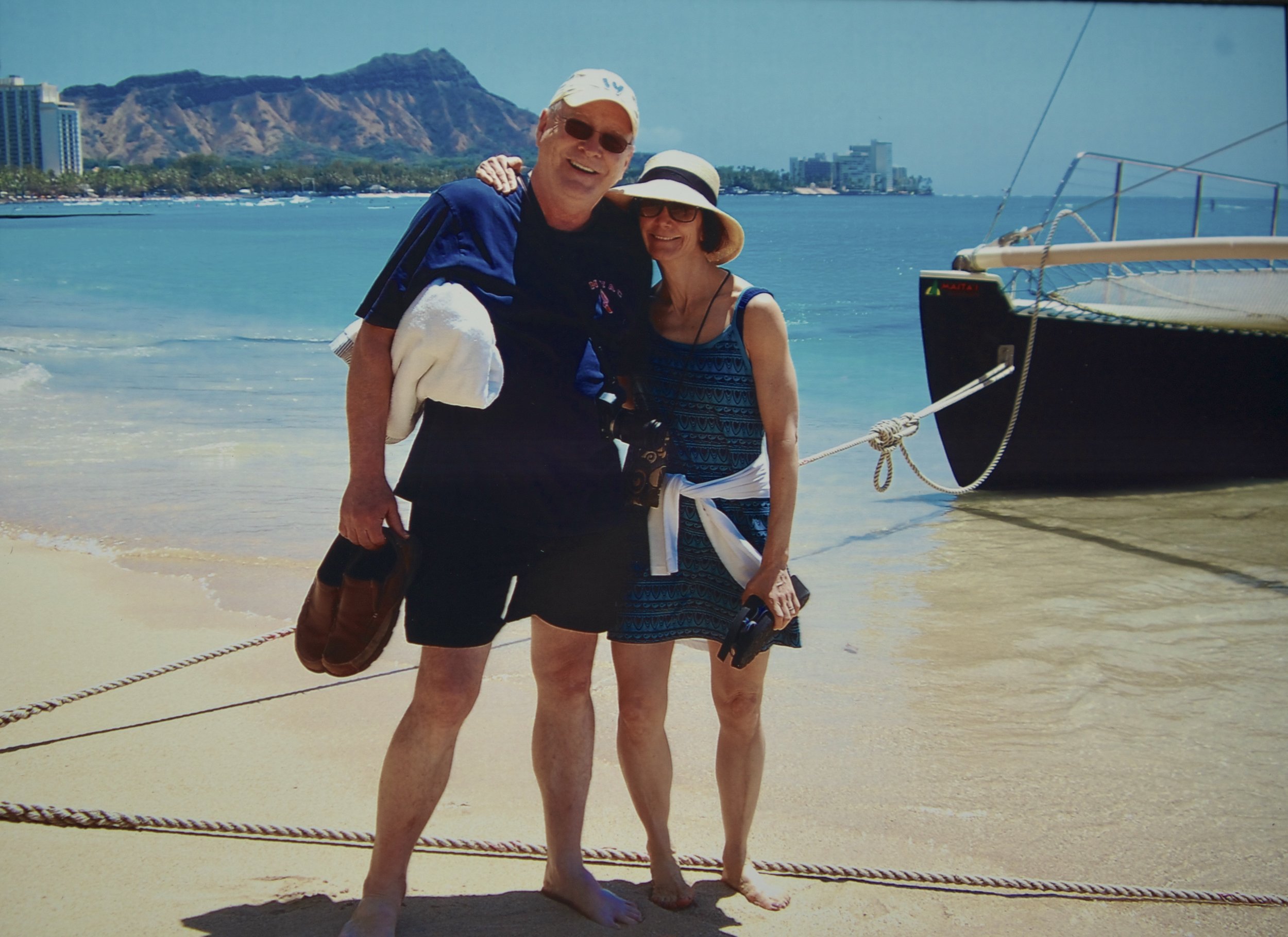Moments of Transformation: Melanie Meyers on Transitions, the Written Word, and the Power of the Group
By Julia Gamolina
Melanie Meyers is a member of the Real Estate Department in Fried Frank's New York office, focusing on real estate development, land use, zoning, environmental review, public approvals, and private/public partnerships. She has worked on some of New York City's most transformative projects, including Hudson Yards, Pacific Park, Greenpoint Landing, and Cornell Technion University on Roosevelt Island.
Prior to joining Fried Frank, Melanie served as general counsel to the New York City Department of City Planning. She began her career as an architect, earning her degree in architecture from MIT and her degree in law from Columbia Law School. In her interview, Melanie talks about her transition from architecture to law and her role in some of New York City’s greatest moments of urban change, advising young architects to try different things and to learn as much as they can in the process.
JG: How did your interest in all of this first develop, specifically architecture?
MM: My dad was a civil engineer and I would go with him to sites and watch the process. I didn’t know what it was that I was particularly interested in, but the idea of all of these different professions coming together to build something - not one person doing it - pulled me in.
In this process, I realized that there was this mysterious architect in the background, this person that somehow was the infrastructure of and responsible for what the guys laying concrete were doing. Convinced that I wanted to be that person, I went to MIT for architecture.
What did you learn about yourself during your time there?
I learned how impatient I was [laughs]. There are so many layers and levels to being an architect, from focusing on the smallest detail to responding to the urban context, and I wanted to do all of them, all the time, probably all by myself, and wanted to do it all right then!
I also learned that capable, talented people fail on occasion, and that failing is part of the learning process. My engineer friends were willing to fail spectacularly as long as they developed a theory, tested it fully, and learned something from the result, and the bravery in that process was something that I appreciated.
Fireside chat between Melanie and MaryAnne Gilmartin, the co-founder and CEO of L&L MAG, at Fried Frank’s Women in Real Estate (WRE) group’s inaugural event in 2018.
Melanie and MaryAnne at WRE’s inaugural event held at the TWA Lounge at One World Trade Center.
What did you do first out of school, during your time in architecture?
My time as an architect wasn’t very long, and part of my transition. I graduated from MIT a semester early because I had run out of money - I literally had only thirty-eight dollars to my name – so I was desperate for a job and managed to get a job working for a Boston firm called Wallace Floyd Ellensweig Moore. However, the firm announced that it was splitting up my first week of work, and I ended up on the Wallace Floyd side which had a strong focus on urban planning as well as architecture.
One of their planning projects was to establish an urban design framework for when the Central Artery in Boston, an elevated roadway, was relocated underground. Not only would an enormous linear structure be removed from the Boston skyline, but a wide swath of developable land would emerge at grade. My job was to draw enormous axonometric drawings of downtown Boston so that the planners could begin envisioning how to knit the various neighborhoods together. The drawings were fascinating to do and see as the project went from developing design and planning principles, to the earliest stages of implementation.
Walk me through your experience of rerouting and going to law school.
I knew I wanted to go back to school eventually and was thinking about whether to get my masters in architecture or switch to planning. However, as the Central Artery project began moving from planning framework to implementation, lawyers started appearing at the team meetings. Whenever they would talk, it seemed that they always had something substantive to say. It wasn’t so much that the lawyers spoke and everyone said, “That shall be,” but rather that they played a central role in the process by thinking about all of the steps that would be required beyond the vision, and by being able to translate between what the planners and designers were thinking about and the rules required to effect those thoughts. I saw that as an interesting place to be, so one day I just thought, “I have to make this decision, and I choose law school.”
What were the takeaways from your time in law school?
Law school was a revelation in that it presented an entirely different way of analyzing and responding to facts and words. Law wasn’t something that was part of my background or my family’s and it is truly a unique way of thinking and using the written word. There was something about having to learn this entirely new language - that just happened to also be English - and perfecting it as an adult that was both surprising and ultimately incredibly satisfying.
Law school also helped me realize how challenging and daunting the law can be to people who aren’t immersed in it. It took me most of my first semester to even understand what I was supposed to be learning about, like that the course “Civil Procedure” is about all of these contorted little rules that allow you to get into and out of court. Imagine what it’s like for that person that has to be in court. Learning that people think and understand in so many different ways was eye-opening.
“You need to think of how to translate a development proposal into a written document of legal code. The text is written, but is ultimately about something that will be three-dimensional, and that will physically be there for a long time.”
What did you do after law school but before Fried Frank?
I was very itinerant in the beginning of my career, but also extremely lucky. I wasn’t even sure what a “land use attorney” was, but managed to get hired by a law firm that had the best land use practice in the City.
Tell our readers what a land-use attorney does.
A land use attorney advises clients - in my case usually institutions and developers - about what they can and cannot build in the City under the City’s Zoning Resolution and other land use codes. If a developer wants to do something that the Zoning Resolution doesn’t allow or requires some discretionary approval, we work on obtaining the entitlements for them - working on a zoning text amendment, a zoning map amendment, a special permit, and whatever else will allow the project that they’re proposing to do to actually go forward.
The entitlement process is both technical and political, and my role as a land use attorney also entails shepherding the applications through a public process involving four levels of input, starting with the local community board and ending at the City Council.
Back to your first job out of law school – what did you do there and what did you do next?
My first big project was actually working on Donald Trump’s Riverside South project stretching from 57th to 72nd Street along the West Side Highway - that was certainly a learning experience! My second big project was the second plan for the redevelopment of the Coliseum Site at Central Park West and 59th Street (now Time Warner Center), which gave me a chance as a young associate to see how developers worked with City and State agencies to pursue an ambitious development project.
Then at the start of my third year one of my professors from Columbia - a full-time professor at another school - called and asked if I would be interested in teaching law. I thought, “Why not try something different and see what else I can learn?” I was a law professor for about four years, full time at Cardozo Law School and then as an adjunct at Columbia in the Architecture School.
How was this?
Another learning experience! The first thing I learned was that I was not a natural public speaker. While I had learned how differently people absorb and understand information, I did not arrive at Cardozo with the skills to translate my way of thinking into one that was easily understood by others. Because I was in front of a hundred students, I learned how to adjust and how to be effective. The transition from truly not being good at something, to learning how to do it, was a great tool to have developed.
Melanie Meyers
You then also worked for City Planning.
Yes, a new mayoral administration was looking for general counsel for the Department of City Planning. I applied and ended up working there. City Planning is the administrative arm for land use policy for the City. It’s also where every private developer who wants to make a zoning change or seek a special permit has to come and present their project.
At City Planning you’re at the intersection of what the Administration wants to see happen, how the Administration has to negotiate with private developers given their public capacity, and what developers want. I was there for about four years; it wasn’t a long time but it was extraordinary to experience and great for what I do now.
Tell me about your time at Fried Frank.
I’ve been at Fried Frank since 2003, and one of the things that our practice is best known for is large projects that not only make a mark on the City, but that create an absolute transformation.
As an example, I represented Cornell University on the land use approvals for Cornell Technical Campus on Roosevelt Island, a fascinating project. Now we’re working with Park Tower Realty on the approvals for and build out of Greenpoint Landing, a half mile stretch of land on the Greenpoint waterfront, that will be a multi-building mixed income residential project with 5,500 residential units and a fabulous, publicly accessible waterfront. Being involved in the making of these moments of transformation is pretty extraordinary.
Looking back, what would you say have been the biggest challenges for you?
Challenge is an interesting word. The first thing I think of are obstacles, or something like that. I’ve certainly had challenging projects and I’ve had challenging moments, but I don’t feel like I’ve ever had a moment where I truly had to overcome something or fight against something that was dragging me backward. I never think about the obstacles of challenge, I think about the fun of it.
“When you think about these big projects, and you think about them in the context of moving into a neighborhood, you see that you can start a dialogue, as opposed to being didactic.”
When you mentioned challenging moments though, what did you mean?
You can have a project that has community opposition, for example, and you have to figure out a way to get your message through to those willing to listen and to figure out whether there are points of agreement that can be the basis of a compromise.
It’s also always challenging trying to figure a project out, especially when a project is of a large scale. You need to think of how to translate a development proposal into a written document of legal code. The text is written, but is ultimately about something that will be three-dimensional, and that will physically be there for a long time. Trying to figure out how to best express the development vision into a code that is also going be around for a long time is definitely a challenge, but also definitely part of the fun.
What have been the highlights?
Highlights come out of the challenges. I worked on a couple of projects on the West Side, one of which would allow for enlargement of Chelsea Market. This was a complicated project, with a fairly vocal group of individuals, some of whom were protesting in a loud way, but we were able to work through it. There was a moment for Chelsea Market where we were at the City Council, which is the last step, and members of the community board came and said about us, “They did what they said they would do,” and asked the Council to approve the project.
When you think about these big projects, and you think about them in the context of moving into a neighborhood, you see that you can start a dialogue, as opposed to being didactic. Those moments are highlights for me.
“The key is that you have to think about what it is that attracted you to the profession in the first place and keep that core as you’re moving through your career.”
What has been your general approach to your career?
My guiding motto early in the career was not quite, “What’s in it for me?” but rather, “Am I learning?” I’ve been very lucky - I’ve been brave enough to have made decisions and jumped at certain times. I didn’t have a five-year plan or anything like that. People would just say to me, “Would you be interested in this?” and I would say, “Sure.” I’m proud that I did that and happy that I used those moments to find my sweet spot. Sometimes things didn’t turn out to be right for me - being a law professor was not the right thing for me to be, but it probably was the right thing for me to try. Those are learning moments that I appreciate.
I love hearing you say that maybe something wasn’t the right thing for you to be but it was the right thing for you to try. Everyone is so anxious about doing the right thing, especially when they’re young, but the “right” thing can mean so many different things.
You learn so much, including things that you can apply to other endeavors. I learned something from being a law professor that I need for my practice - I do public speaking all the time - and I don’t know how I would have developed that skill had I not been a law professor. But also, you’ll probably learn that you’re not going to be all things to all people. You just can’t be.
This revelation made me realize the power in the group, as well. Maybe that’s the other thing that has been a highlight. I’m a pretty competent person, so I spend a lot of time saying “I’ve got this,” and I traditionally thought that “this” was pretty much everything. Once you realize you’ve not great at everything, and that other people are great at those things that you aren’t great at and you can work together, it’s fabulous.
Melanie on vacation with her husband Ted.
What advice do you have for architects?
Keep your eyes open about different opportunities. There are a lot of ways to be an architect, similarly to lots of ways of to be a lawyer. The key is that you have to think about what it is that attracted you to the profession in the first place and keep that core as you’re moving through your career. If you’re on a path where that element is not necessarily going to be part of it, then either that element wasn’t quite the reason why you got involved, or maybe you’re not going in the right direction. Figure out what it is that you’re attracted to, and make sure you put yourself in the best position to maintain it.
Since I didn’t stay in the architecture world, if you really want to be an architect, you probably want to have more patience than me [laughs].
What advice do you have for those just starting their careers?
If you talk with people who are at the top of their field, almost everybody has these ins and outs and zigs and zags. The zigs and the zags can often be the things that define you and make you a successful person. You have moments where you figure out your strengths and your weaknesses, and how to compensate for those weaknesses, and you move on. You learn a lot about yourself in that process. Every one of these little moments are things where, if you’re there, why not try.
It’s always nice to hear of the zig zags that you mention, because you realize that you’re never stuck. Something else will always come along and you can always reroute.
Absolutely. It might not be exactly right at that point, and it might not have worked out the way you wanted it, but at some point it’s going to work out.
This interview has been edited and condensed for clarity.




